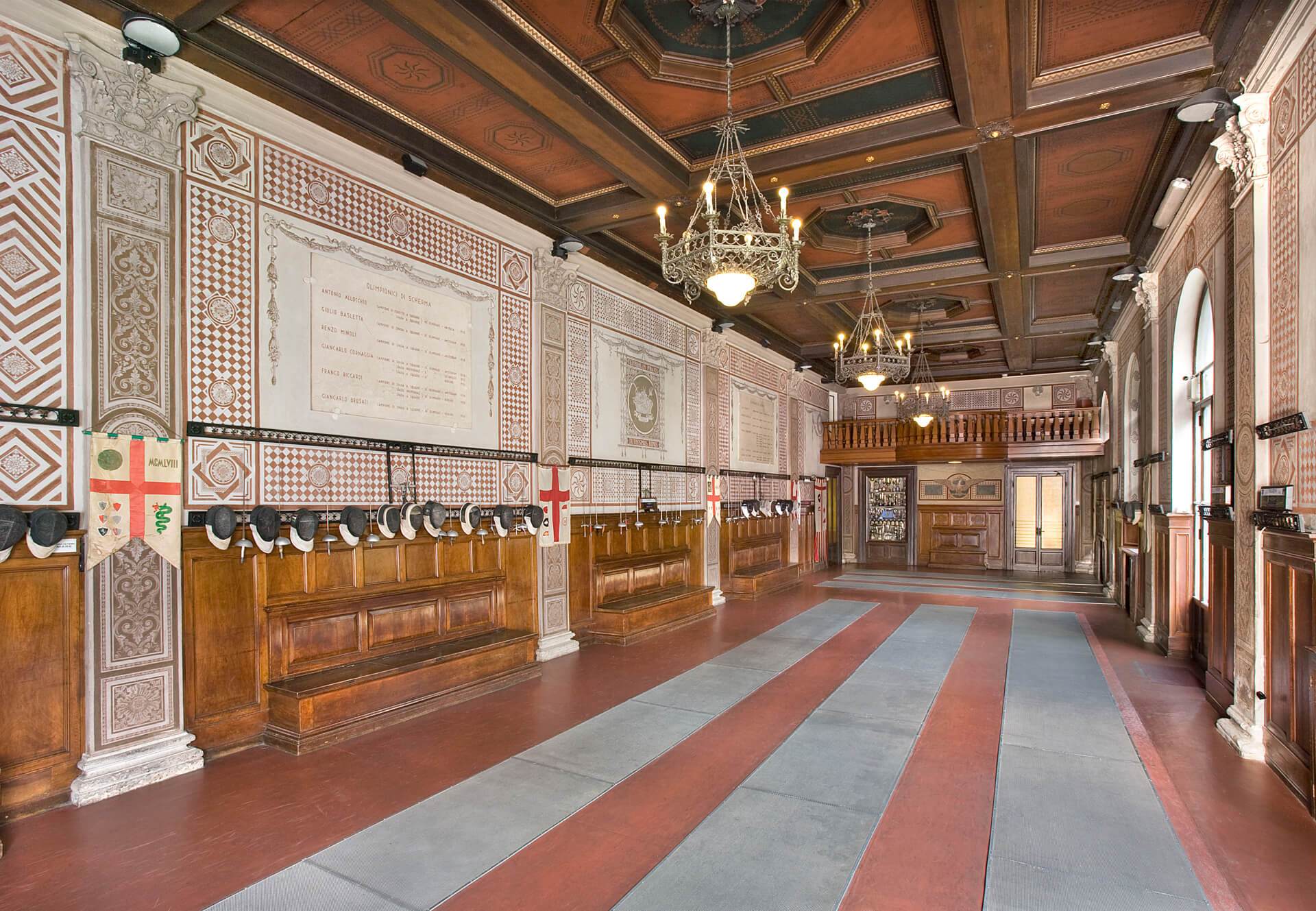Fencing
The modern Olympic Games were born in Athens in 1896. Fencing and swordplay were already present, but no Italians participated that year even if, historically, they were always the most prestigious fencers. Four years later two Italian fencing masters, Antonio Conte, who taught in Paris, and Italo Santelli, who taught in Budapest, participated as individuals and won the gold and silver medals for the sabre.
Terribilis pravis − tutissimus bonis, that is, ‘relentless against the wicked, a safe haven for the honest’, is the motto of the fencing hall of the Società del Giardino since its founding in 1882, fourteen years before the first edition of the modern Olympic Games. However, its fencing tradition is even older because it was formed out of the fusion of the two most prestigious Milanese fencing institutions: the Sala Galli and the Sala Redaelli, formed at the beginning of the nineteenth century and used by the best Milanese fencers of the day.
On 3 June 1903, the Italian Federation of Fencing (FSI − Federazione Schermistica Italiana) was founded. With this step, Italian fencing assumed more sports-like characteristics.
In 1920, the fencing hall of the Società del Giardino entered the history of Italian sports with a gold medal − the first in its long history of medals − won by one of its sword team athletes at the Olympics in Antwerp.
The names of those fencers who have contributed to the Società del Giardino’s glorious reputation with their victories in the Olympics and in European and world championships are inscribed on marble plaques in the Giardino’s fencing hall: Roberto Battaglia, Giancarlo Brusati, Edoardo Mangiarotti (six gold medals), his brother Dario, Alberto Pellegrino, Luigi Carpaneda, and − closer to our own days − Margherita Zalaffi, Angelo Mazzoni, Alfredo Rota, Diana Bianchedi, and Matteo Tagliariol.
The fencing hall of the Società del Giardino is without a doubt the most glorious Italian sports facility and one of the most prize-winning halls of its kind in the world.
Today, the hall accommodates numerous children of the Giardino’s members, as well as external swordsmen and swordswomen, for a total of about 200 athletes of all ages. In this way, the Giardino contributes significantly to the sports and educational formation of young people.
For its sporting achievements, the Società del Giardino was awarded the first Collare d'oro al merito sportivo (the prestigious sporting merit award) by the Italian Olympic Committee (CONI) in 1997.


